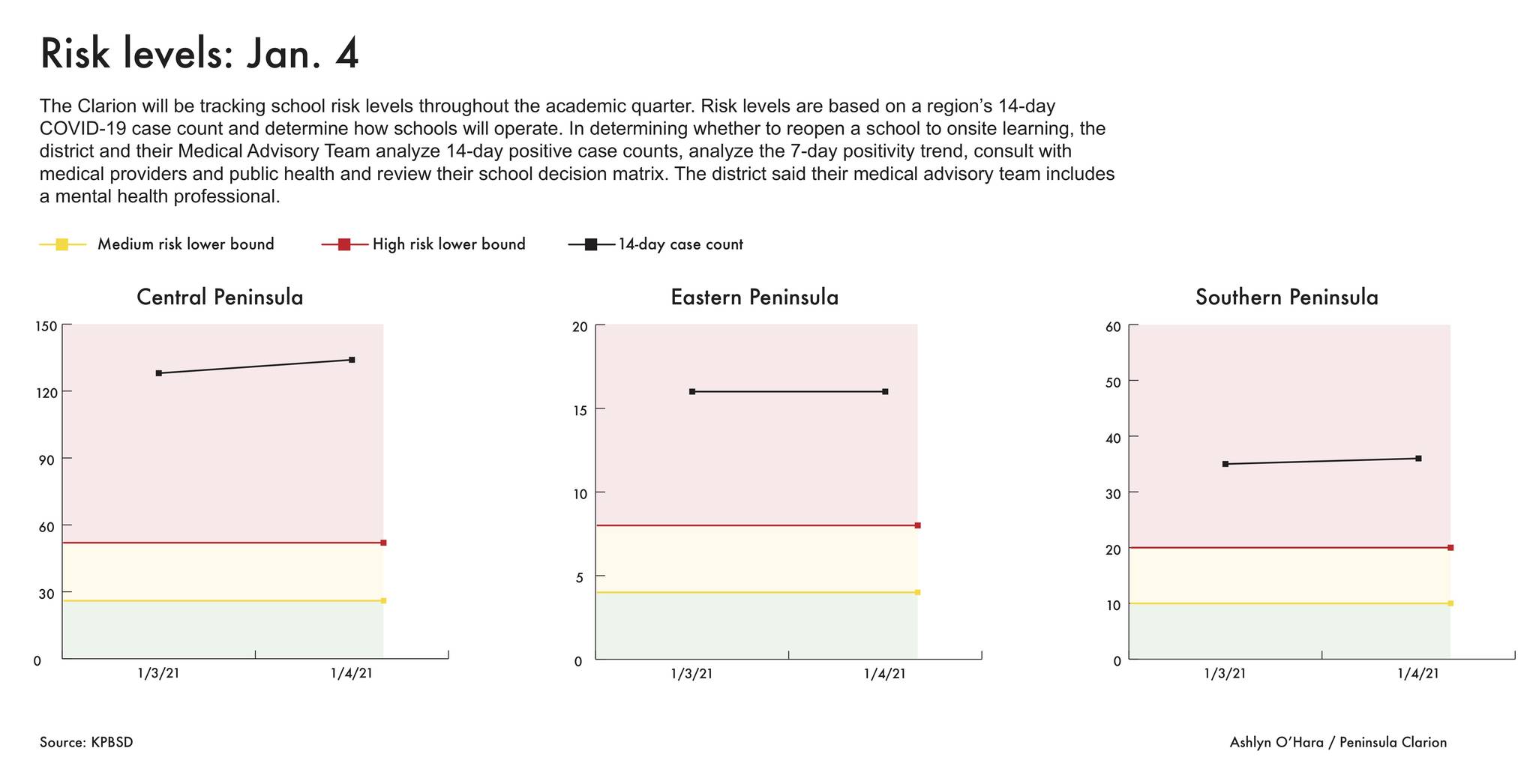The Kenai Peninsula Borough School District’s third academic quarter began on Monday, with most students in the district still learning 100% remotely due to high COVID-19 case counts throughout the peninsula.
At their Dec. 7 meeting, which lasted for more than seven hours, the KPBSD Board of Education responded to community concerns about extended remote learning by changing how schools operate while at “high-risk” level. Instead of having learning be 100% remote during high-risk level, pre-K through sixth grade students will be allowed to attend classes in person five days a week. Additionally, students in grades seven to 12 will be allowed to attend in-person classes on an A/B schedule. The changes to high-risk operations will become effective no later than Jan. 19.
During 100% remote learning, pre-K, kindergarten and special education/intensive needs students have been allowed to attend classes in person during high-risk levels. From Nov. 14 to Dec. 2, students in those groups also attended classes 100% remotely.
Throughout the break, the 14-day case rate for all the central, southern and eastern peninsula decreased significantly, though as of Monday all were still at high risk. As of Jan. 4, the central peninsula needed to lose 83 cases from their 14-day case count in order to drop back into medium-risk level. The southern peninsula needed to lose 17 cases and the eastern peninsula needed to lose nine cases.
According to a district announcement on Dec. 18, a decision will be made on Tuesday about whether or not schools may begin operating under the revised “high-risk” level operations one week early. It is also possible for all students to return to on-site learning prior to Jan. 19 if community spread of the virus reduces such that enough cases are lost from 14-day case counts, which determine school risk levels.
Community opposition to prolonged remote learning came to a head at the end of last quarter, when parents protested at the intersection of the Kenai Spur and Sterling highways for multiple days and said they would strike by keeping their children from attending classes remotely if further changes to the district’s plan were not announced before the start of the quarter.
On Monday, members of a Facebook group called “Done with DISTANCE, We need your ASSISTANCE!,” which organized the protests last month, had mixed responses about whether or not they were participating in the strike.
“I notified the principals of my kids schools that we would not be participating in distance learning any longer,” wrote Lisa Hooper Linegar. “My kids will be marked absent until in school learning resumes.”
Several parents in the 50-comment thread said their children had not received any correspondence from their teachers or that Canvas, students’ virtual learning portal, had not been updated prior to the first day of the quarter.
“All 3 of mine are logging into the Zooms/Google Meets they know of,” wrote Erin Magee Martin. “However, I wouldn’t say that “learning” is really happening. My 9th grader’s teachers didn’t update anything until today, so she has been scrambling trying to figure out which classes have Zooms or assignments today.”
KPBSD Superintendent John O’Brien said last month on KSRM that whether or not schools reopen will depend on medical data and not pressure from members of the community.
In determining whether to reopen a school to on-site learning, the district and its Medical Advisory Team, which includes a mental health professional, analyze seven-day positive case counts, analyze the seven-day positivity trend, consult with medical providers and public health and review their school decision matrix.
During 100% remote learning, Get-It and Go meals are free for all students and can be picked up daily at school.
Operational risk levels, case incidence rates and case numbers by community are updated daily on the district’s risk-levels dashboard at covid19.kpbsd.org/dashboard.
Reach reporter Ashlyn O’Hara at ashlyn.ohara@peninsulaclarion.com.

